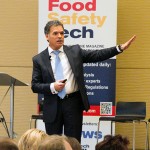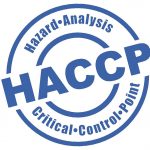Data analytics can reduce the risks of foodborne illness, improve collaboration among food processing and service teams and help identify food fraud. As technology has advanced, researchers, policy-makers and food safety professionals are finding new ways to collect, use and analyze data. Following are some of the latest advances in the field of data analytics and food safety.
Improving Risk Assessment Strategies
Data and tracking have long been integral components of food safety risk assessment. Today, researchers are combining big data, machine learning and microbial genomics to create next-generation quantitative microbial risk assessment (QMRA).
Researchers at the University of Maryland received funding from the United States Department of Agriculture National Institute of Food and Agriculture (USDA-NIFA) to support work that combines machine learning and computational analysis with genomic sequencing and data about foodborne pathogen characteristics. They intend to take advantage of big data available in the agriculture and food sectors and integrate data from food production, processing, food safety risk factors and genomic data to inform—and potentially transform—public health strategies to prevent foodborne diseases and speed response to outbreaks.
QMRA can be used to: predict the behavior and transmission of pathogens across food production, processing and supply chain; identify areas in the chain that could lead to contamination; and estimate the probability and consequences of adverse public health effects in the event that tainted products are consumed.
Abani Pradhan, associate professor in Nutrition and Food Science at the University of Maryland and lead investigator on this project, explains that this data analysis project should lead to better accuracy due to the inclusion of AI and genomics. “The sheer abundance of information by including molecular and genomic data available should increase the robustness of disease risk estimates by reducing the sources of uncertainty and variability in the QMRA model,” said Pradhan. “This is important because there are so many different species of each foodborne pathogen, and even within the same species, there are different variations or types called serovars.”
Pradhan’s team are starting with Salmonella, because it has more than 2,500 serovars, all of which have highly variable characteristics. How resistant a pathogen is to heat stress or antimicrobials, how infectious it is and how quickly it grows and spreads are all characteristics of the pathogen that can be partially explained by genomic data.
“The idea is to connect that genetic information with the characteristics of the pathogen to bridge the gap between the genes and the food safety aspects for consumers,” said Pradhan. “If we can use machine learning tools to understand the linkages between genotypes and phenotypes, based upon that we can determine which serovars are the most concerning so that we can focus our experimental work on those types and further strengthen our models to create a risk assessment that provides a more robust and complete picture of the risk for risk mitigation.”
Using Online Data To Detect Safety Issues
The U.S. has a robust regulatory and oversight system to identify foodborne threats. In 2019, researchers led by Adyasha Maharana of the Department of Biomedical Informatics and Medical Education, University of Washington, wanted to see if online consumer reviews might contain safety clues that could identify unsafe food products before official inspections or recalls occurred. They created a database linking Amazon food and grocery product reviews to product recall data from the FDA, and analyzed more than 1 million Amazon reviews featuring words like “sick,” “ill” and “foul.” The results showed that only 0.4% of the Amazon reviews containing those words were for recalled products.
The researchers also found synonyms for terms linked to FDA recalls in 20,000 reviews, although those products were still on the market. The researchers concluded that this “might suggest that many more products should have been recalled or investigated” and note their work could be used to aid regulators in determining which items to investigate.
A similar project, Google’s machine-learning algorithm FINDER (Food-borne Illness Detector in Real Time), uses search and location logs to identify restaurants that could be making people sick in real time. FINDER pulls data from people’s Google search queries for terms or symptoms that suggest they may have food poisoning. It then matches that information to Google location data logs to figure out which restaurants those individuals may have visited.
They tested this approach in Las Vegas and Chicago for four months in each city. The data analysis application helped food inspectors find 25% more unsafe restaurants compared to the previously used inspection method.
Neither of these case studies suggests regulators should do away with their more established procedures. However, combining this type of data analysis with existing strategies could further enhance safety.
Reducing Food Fraud
Many of today’s consumers want to know that the food they are eating comes from organic farms or was otherwise produced to certain standards. That’s why many restaurants now list which supply chain partners they use for specific menu items. This type of data reporting and sharing also offers improved food traceability. Having accurate information about where a food or beverage originated makes it easier to address and track problems when they do occur.
End-to-end traceability and real-time monitoring technologies continue to evolve, bringing new, more powerful tools that help providers at every link of the farm to table chain identify loss, theft and potential safety issues.
At the University of Adelaide, researchers improved upon current methods of detecting wine fraud by combining fluorescence spectroscopy and machine learning to determine a beverage’s molecular fingerprint. The team looked at Cabernet Sauvignon from three different wine regions. They found that their method could correctly authenticate the geographic origins of wine with 100% accuracy.
It is impossible to remove all food and beverage safety risks from the supply chain. However, successful applications of data analysis that help keep people safer are undoubtedly steps in the right direction. As more companies in the food and beverage industry adopt new data analysis tools, other interesting possibilities will become apparent. Even as things stand, the applications are full of promise.







